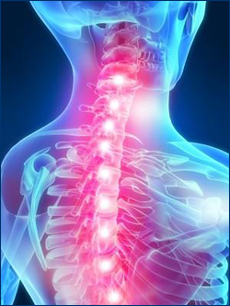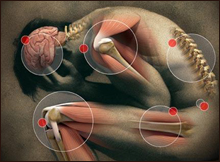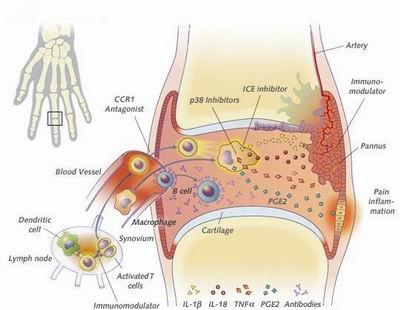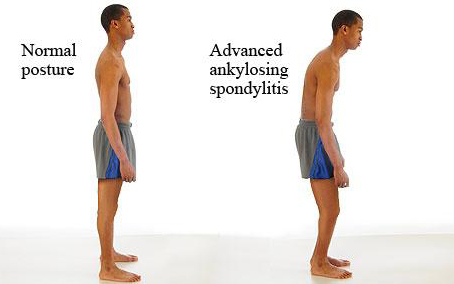Systemic inflammatory disorder that may affect many tissues and organs, but principally attacks synovial joints. The process produces an inflammatory response of the synovium (synovitis).
The pathology of the disease process often leads to the destruction of articular cartilage and ankylosis of the joints.
Rheumatoid arthritis can also produce diffuse inflammation in the lungs, pericardium, pleura, and sclera, and also nodular lesions, most common in subcutaneous tissue. Although the cause of rheumatoid arthritis is unknown, autoimmunity plays a pivotal role in both its chronicity and progression, and RA is considered a systemic autoimmune disease.
About 1% of the world’s population is afflicted by Rheumatoid Arthritis, women three times more often than men. Onset is most frequent between the ages of 40 and 50, but people of any age can be affected
ANKYLOSING SPONDYLITIS:
is a chronic, inflammatory arthritis and autoimmune disease. It mainly affects joints in the spine and the sacroiliac joint in the pelvis, and can cause eventual fusion of the spine.
ACUTE GOUT:
is a medical condition usually characterized by recurrent attacks of acute inflammatory arthritisa red, tender, hot, swollen joint. It is caused by elevated levels of uric acid in the blood which crystallize and are deposited in joints, tendons, and surrounding tissues.
- PAINFUL MUSCULO SKELETAL CONDITIONS
 Musculoskeletal pain is pain that affects the muscles, ligaments and tendons, along with the bones.
Musculoskeletal pain is pain that affects the muscles, ligaments and tendons, along with the bones. - Muscle tissue can be damaged with the wear and tear of daily activities. Trauma to an area (jerking movements, auto accidents, falls, fractures, sprains, dislocations, and direct blows to the muscle) also can cause musculoskeletal pain.
Other causes of pain include postural strain, repetitive movements, overuse, and prolonged immobilization. - Changes in posture or poor body mechanics may bring about spinal alignment problems and muscle shortening, therefore causing other muscles to be misused and become painful.
BURSITIS AND TENDONITIS
 Bursitis and tendinitis are both common conditions that cause swelling around muscles and bones. They occur most often in the shoulder, elbow, wrist, hip, knee, or ankle.
Bursitis and tendinitis are both common conditions that cause swelling around muscles and bones. They occur most often in the shoulder, elbow, wrist, hip, knee, or ankle.- A bursa is a small, fluid-filled sac that acts as a cushion between a bone and other moving body parts such as muscles, tendons, or skin. Bursae are found throughout the body. Bursitis occurs when a bursa becomes swollen.
- A tendon is a flexible band of tissue that connects muscles to bones. Tendons can be small, like those found in the hand or ankle, or large, like the Achilles tendon in the heel. Tendons help create movement by making the muscles push or pull the bones in different ways. Tendinitis is the severe swelling of a tendon.
SPRAINS AND STRAINS:
strain occurs when the muscle tendon unit is stretched or torn. The most common reason is the overuse and stretching of the muscle. The damage may occur in three areas:
The muscle itself may tear.
The area where the muscle and tendon blend can tear. 
The tendon may tear partially or completely (rupture).
OSTEOARTHRITIS:
also known as degenerative arthritis or degenerative joint disease, is a group of mechanical abnormalities involving degradation of joints, including articular cartilage and subchondral bone. Symptoms may include joint pain, tenderness, stiffness, locking, and sometimes an effusion.




